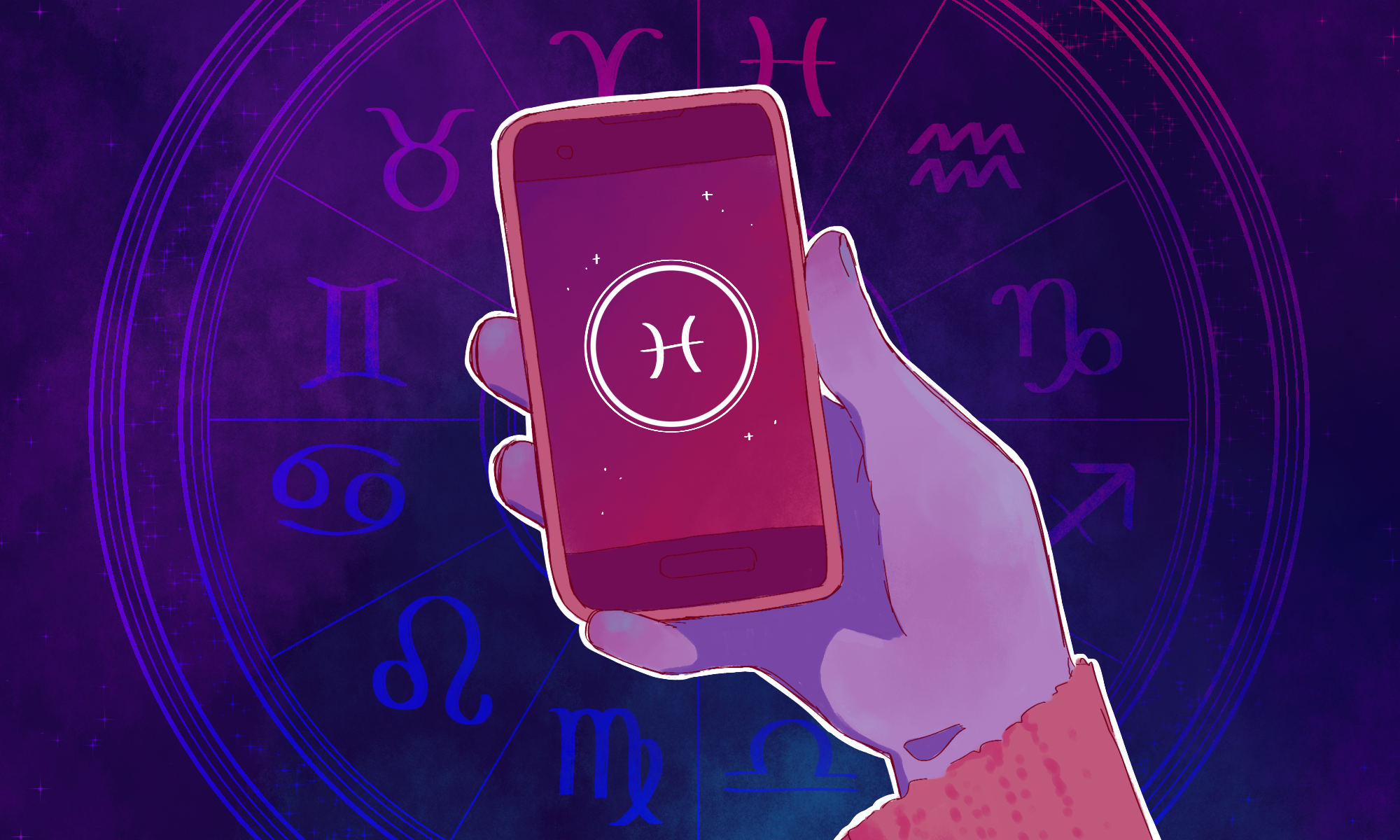The Quad: How astrology has evolved from tracking the weather to tagging your friends

(Jae Su/Daily Bruin)
By Audrey Pham
Feb. 27, 2019 7:49 p.m.
It’s not you. It’s your zodiac sign.
Well, maybe not. But either way, Westernized astrology has infiltrated modern society and, more recently, social media. We’ve all seen at least one incarnation of the ubiquitous “the signs as…” astrology meme: From deleted Wikipedia pages to “thank u, next” lyrics, the list goes on.
Western astrology hasn’t always been encapsulated in Instagram posts discussing archetypal zodiac sign traits, though.
Since 15,000 B.C., early human civilizations have looked to the stars as a navigation tool, giving birth to a preliminary form of astrology. Recordings of the lunar phases were etched onto cave paintings, animal bones and mammoth tusks as discovered by archaeologists. As nomadic lifestyles were swapped out for agrarian societies, observing the planets and stars was sort of like a prehistoric weather app necessary to prepare for nature’s cycles.
Starting around 2,000 B.C., Sumerians in Mesopotamia began channeling their interests in divination, astronomy and mathematics into creating a structured astrological system. This is where the earliest known astrological texts – “Enuma Anu Enlil” and “Venus Tablet of Amisaduqa” – emerged from, written in cuneiform.
Most astrological texts of the time were very different from the daily horoscopes that we know today. In fact, much of Mesopotamian astrology was a simple observation of the planets and stars and their relation to the kingdom. For example, a translated Mesopotamian cuneiform reads: “When Moon and Sun are in opposition on the 14th lunar day, the king of the realm will be possessed of an extensive ear.”
By 600 B.C., Mesopotamians had established the 12-sign astrological system that we commonly associate with astrology today. This was also around the same time that astrology spread to ancient Greece, which deeply intrigued Greek philosophers and astronomers alike.
Greek astronomer, geographer and astrologer Claudius Ptolemy’s text “Tetrabiblos” added to the Greek involvement in astrology. The text explored the philosophy behind astrology, particularly the belief that planetary influences come from their relationship to celestial bodies such as the sun. It is the only remaining ancient astrological text and was the established astrological train of thought until the 17th century. Nonetheless, ideas presented in “Tetrabiblos” such as zodiac signs and houses remain at the core of our modern understanding of astrology.
As the Middle Ages rolled in and the Roman Catholic Church began its conquest of Western Europe, the Quiet Period of astrology began. This era was characterized by Western astrologers’ needing to remain low profile as the Catholic Church’s power grew – astrology was heresy, with the danger of prosecution.
The Age of Enlightenment further drove astrology into decline. Rationalism and individualism were above all: Astrology, seen as a factless medium of entertainment, had no place in this period.
It wasn’t until the 20th century that Western astrology was revived, primarily due to astrologers such as Grant Lewi and Isabel Hickey. Whereas past astrological practices focused on observations and predictions of events, this wave of “psychological astrology” focused on understanding the nuances of the individual personality. Gone were the days of astrology being a faraway concept – it was now relatable to the average Joe.
The new era of psychological astrology took mainstream American culture by storm with the help of the 20th century’s rise of mass media. Whether it be in the form of magazines such as American Astrology or newspapers such as The Washington Times, the American public has had more access to modern astrology than ever before.
The relatively recent resurgence of astrology has not gone unnoticed. Alby Toribio, owner of GnarlyAstrology on social media platforms Instagram and Twitter has noted the cycles that astrology goes through in being mainstream, and then disappearing.
“A lot of (the fluctuations in astrology’s popularity) have to do with when times are a little bit hazy and unstable,” Toribio said. “People tend to turn to astrology and other alternative guides to help them through these times.”
This has some truth to it: A 1921 article from The Washington Times titled “Mars Will Sway World Until 1944, Astrologist Reveals” attributed the “Anglo-Japanese alliance” to opposing zodiac signs, capturing the United States’ wartime fears at the time. As it modernized into a psychological tool, astrology offered a conjectural explanation for American sentiments of uncertainty as spurred by wartime activities.
So how did astrology come to take over the internet?
A lot of this answer lies, again, in accessibility and approachability – but this time, through a form specific to the 21st century: social media. With the emergence of memes through social media, astrology was just a phone screen tap away for the hip and trendy Generation Y and Z audiences.
This rise of astrology memes, commonly shortened to “astro memes,” is successful in in its reimagined take on psychological astrology. Though still drawn from ancient knowledge on zodiac signs and their characteristics, the memes have a lighthearted undertone that makes digesting astrology easier.
Known as “notallgeminis” on Instagram and Twitter, Courtney Perkins incorporates this more casual and approachable undertone into many of her astro memes.
“Seeing a meme about how Libras are obsessed with getting a text back seems funny, but what you’re going to find from a well-educated astrologer is that Libras are ruled by Venus, the sign of love, so they’re obsessed with their love life,” Perkins said. “You’re really getting the same information, but just the watered-down version of it on Instagram that’s designed to be funny and enjoyable.”
Western astrology’s journey from Mesopotamian cuneiform to print publications to astro memes was a long but expected one. Its current – but probably not final – form is designed to entertain and appeal to the individual.
So whether or not it’s you or your zodiac sign, you probably can’t help but scroll through an Instagram and wonder what botched marriage proposal or college roommate you are as indicated by your sign.


